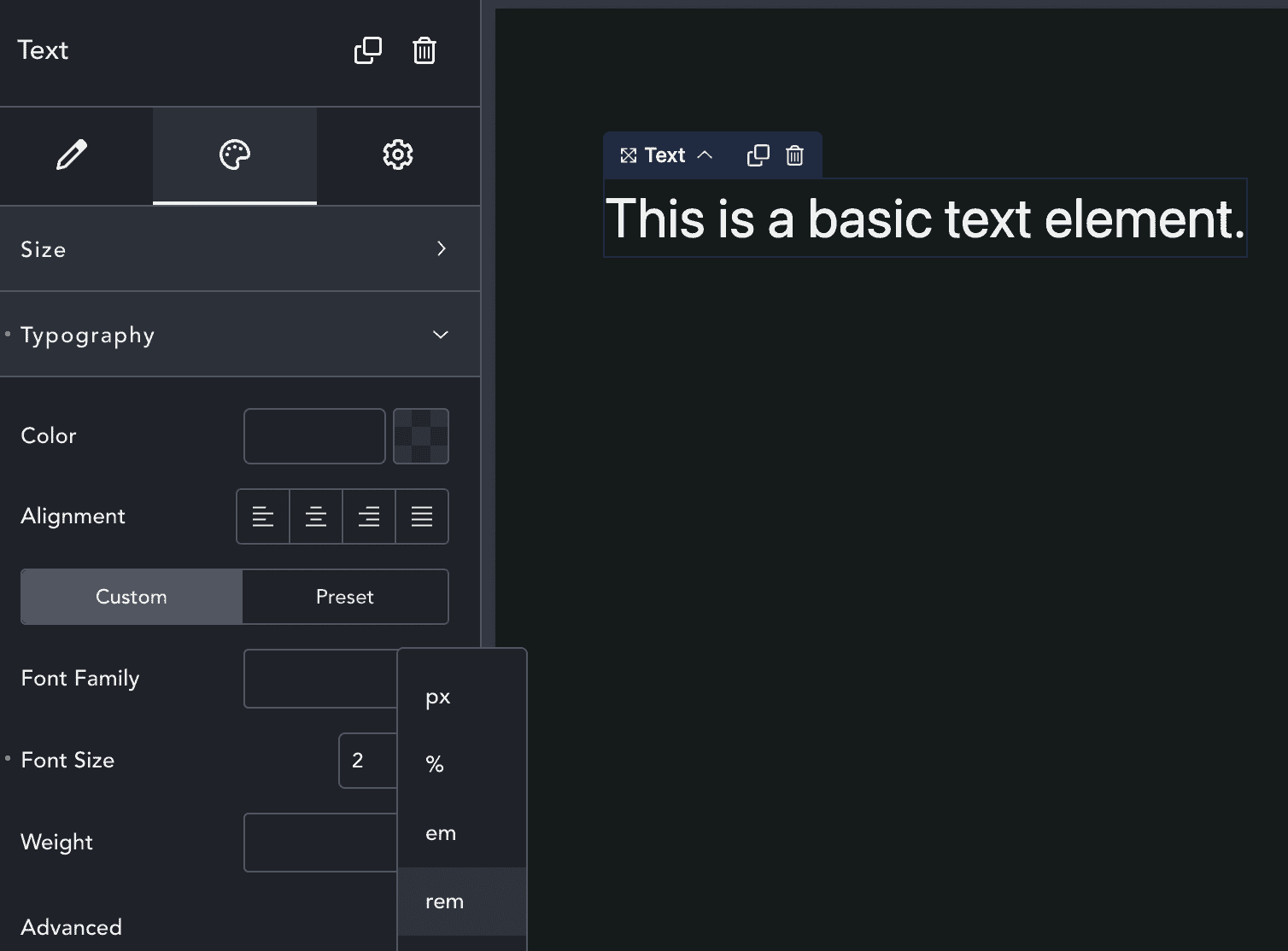When I 1st started out establishing web sites about 5 many years in the past, I did not know anything at all about employing distinct dimension units for my CSS properties. I just employed pixels… all over the place. It was a catastrophe. My websites looked wonderful on my laptop, but as quickly as somebody viewed them on a gadget with distinct display sizes, every thing went downhill.
It was one particular of the 1st lessons I discovered the tough way. I produced an whole site employing only pixels, and when I went to check it out on my laptop, the site was so tiny that I could not even go through the text.
Moral of the story? Responsive layout is a point for a explanation.
There are a handful of distinct techniques to make your CSS responsive, but one particular of the most widespread is employing distinct dimension units for your properties. In this post, we’re going to talk about when you ought to use each and every unit variety so that you can produce scalable, responsive web sites.


What Are Pixels?
PX: Pixels are fixed-dimension units that are employed in display media (i.e. to be displayed on a laptop display, telephone, or tablet). 1 pixel is equal to one particular dot on your display.
Pixels are wonderful for making sharp photos and can be valuable when you want to handle the precise dimension of an component. Nonetheless, you ought to keep away from employing pixels for font sizes, as they can be tough to go through on distinct display sizes.
What Are Percentages?
%: Percentages are relative units that are primarily based on the dimension of the containing component. The percentage is calculated as a percentage of the containing element’s width or height.
Percentages are wonderful for making responsive web sites since they let aspects to resize primarily based on the dimension of the display. Nonetheless, percentages can be a minor difficult to comprehend. We advise typically employing them on aspects that are contained inside other aspects, this kind of as divs.
What is a Mother or father Component?
Just before we get into Ems and Rems, we need to have to swiftly talk about mother or father aspects. A mother or father component is an HTML component that consists of other HTML aspects.
For instance, in the code beneath, the div component is the mother or father component and the p component is the youngster component:
<div> <!-- div is the mother or father of p --> <p>This is a paragraph text (the youngster of div)</p> </div>
The explanation we’re mentioning mother or father aspects is since Ems and Rems are relative units that are primarily based on the dimension of the mother or father component. We’ll go in excess of this quickly.
What is EM?
EM: Ems are relative units that are primarily based on the font dimension of the mother or father component. 1 em is equal to the font dimension of the mother or father component.
Ems are wonderful for responsive layout since they let you to resize aspects primarily based on the font dimension of the mother or father component. This can be beneficial if you want to make certain that text is constantly legible, no matter what display dimension it really is becoming viewed on.
If the font dimension of the mother or father component is 18px, then one particular em will be 18px. If you set an element’s font dimension to 2em, then that component will have a font dimension of 36px. This will be responsive even though, since if the font dimension of the mother or father component adjustments, then so will the youngster element’s font dimension.
What is a REM?
REM: Rems are relative units that are primarily based on the font dimension of the root component. The root component is the highest degree component in the HTML document. The font dimension of the root component is generally set to 16px, but it can be modified employing CSS.
Rem units are quite related to Em units, but they are primarily based on the font dimension of the root component as an alternative of the mother or father component. This can be beneficial if you want to produce responsive web sites that use a distinct base font dimension.
For instance, if the root component has a font dimension of 18px and you set an element’s font dimension to 2rem, then that component will have a font dimension of 36px. Nonetheless, if you adjust the font dimension of the root component to 20px, then the element’s font dimension will immediately adjust to 40px.
What is the Variation Among Ems and Rems?
The major distinction among Ems and Rems is that Ems are primarily based on the font dimension of the mother or father component, although Rems are primarily based on the font dimension of the root component.
The two Ems and Rems ought to most very likely be your default option when making responsive web sites. Nonetheless, if you need to have to handle the dimension of an component far more exactly, then you may possibly want to use fixed units like Pixels or Percentages.
In addition to font units, some units handle the dimension of aspects primarily based on the display dimension. These are known as Viewport units and we’ll target on two distinct sorts: vw and vh.
What is VW?
VW: VW stands for Viewport Width. Viewport is the noticeable location of the display. 1 vw unit is equal to one% of the viewport width. So, if the viewport width is 100px, then one particular vw will be 1px.
VW units are wonderful for responsive layout since they let you to resize aspects primarily based on the width of the display.
For instance, if you set an element’s width to 50vw, then that component will be 50% of the viewport width. So, if the viewport width is 100px, then the component will be 50px broad.
What is VH?
VH: VH stands for Viewport Height. 1 vh unit is equal to one% of the viewport height. So, if the viewport height is 100px, then one particular vh will be 1px.
This functions the very same way as VW does, but it really is primarily based on the height of the display as an alternative of the width.
For instance, if you set an element’s height to 50vh, then that component will be 50% of the viewport height. So, if the viewport height is 100px, then the component will be 50px tall. If you happen to be striving to make a hero component on your webpage, set the minimal height of the segment to a vh of one hundred, and it will fill the whole display, no matter what the height of the gadget is.
Making use of Responsive Design and style Breakdance Video Tutorial
Conclusion
Breakdance is a quite strong device for making responsive WordPress web sites, but it really is essential that you comprehend how to use all of the distinct dimension units to turn into a responsive net designer. In this post, we have covered the most widespread units: pixels, ems, rems, vw, and vh.
Keep in mind, each and every unit has its personal strengths and weaknesses. For instance, pixels are wonderful for exact handle but they will not scale effectively on smaller sized screens. Ems and rems are wonderful for responsive layout since they scale relative to other aspects, but they can be tough to handle exactly.
As a common rule, you ought to use ems or rems for most of your sizing requirements and reserve pixels and percentages for distinct situations in which you need to have far more handle. With a minor practice, you are going to be a professional in no time! Have any concerns about integrating any of these with Breakdance? Depart a comment beneath!




